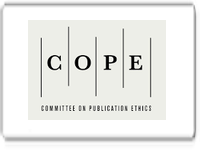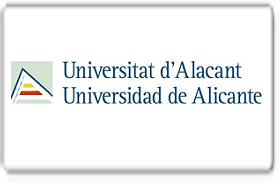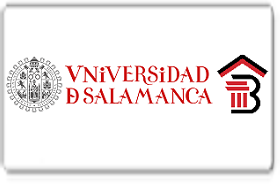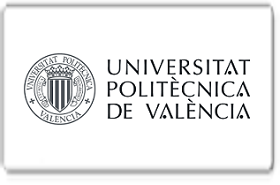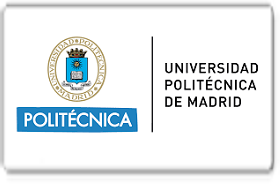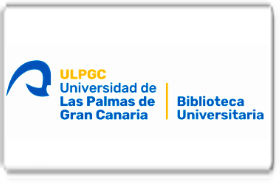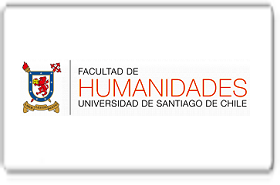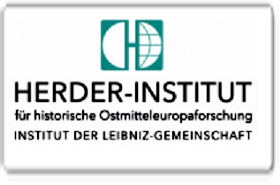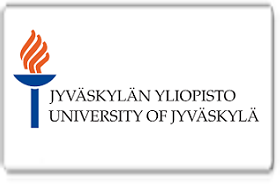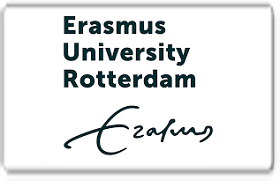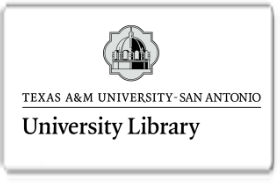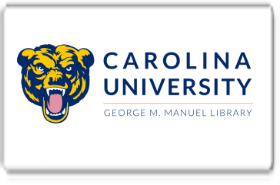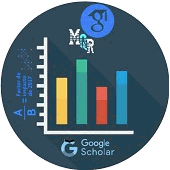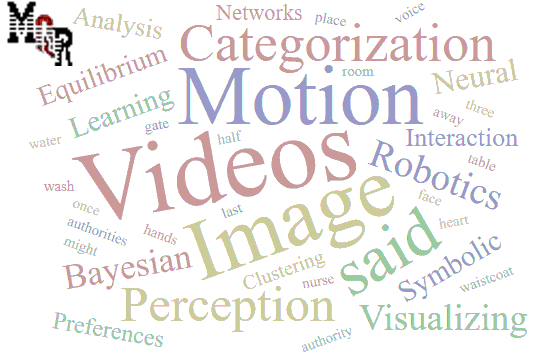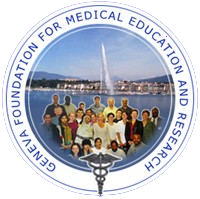La didáctica de la matemática en interacción con la Tecnología de la Información y Comunicación
DOI:
https://doi.org/10.56048/MQR20225.8.1.2024.3308-3328Palabras clave:
Aprendizaje Virtual; Enseñanza de Matemáticas; Tecnología EducativaResumen
Este artículo explora el impacto de las Tecnologías de la Información y Comunicación (TIC) en la enseñanza de matemáticas durante el confinamiento por COVID-19. Mediante un estudio cuantitativo con 61 niños y un análisis de la implementación de herramientas tecnológicas en la educación, se evalúa cómo las plataformas virtuales y las metodologías interactivas, como el juego, pueden potenciar el aprendizaje matemático. La investigación abarca desde la efectividad de las TIC en mejorar el rendimiento académico hasta las percepciones de los docentes sobre su integración en el aula. Los hallazgos revelan un incremento notable en el rendimiento de los estudiantes que utilizan TIC, destacando su valor para enriquecer la educación matemática. Este estudio destaca la importancia de incorporar las TIC en la enseñanza, no solo para adaptarse a contextos de aprendizaje remoto sino también para fomentar habilidades esenciales como el pensamiento crítico y la resolución de problemas en un entorno digital.
Descargas
Métricas
Cited
DOI: 10.56048![]()
Citas
Alabdulaziz, M. (2021). COVID-19 and the use of digital technology in mathematics education. Education and Information Technologies, 26(6), 7609-7633. https://doi.org/10.1007/s10639-021-10602-3
Aloufi, F., Khalil, I., Elsayed, A., Wardat, Y., & Alotaibi, A. (2022). Virtual Mathematics Education During COVID- 19: An Exploratory Study of Teaching Practices for Teachers in Simultaneous Virtual Classes. International Journal of Learning and Teaching, Vol. 20. https://doi.org/10.26803/ijlter.20.12.6
Altamirano, M., Guaña, J., Arteaga, Y., Patiño, L., & Chipuxi, L. (2022). Uso de las herramientas digitales en la educación virtual en Ecuador—ProQuest. Revista Ibérica de Sistemas e Tecnologias de Informação, E54, 194-202.
Alvarado, L., Aragón, R., & Bretones, F. (2020). Teachers’ Attitudes Towards the Introduction of ICT in Ecuadorian Public Schools. TechTrends, 64(3), 498-505. https://doi.org/10.1007/s11528-020-00483-7
Alzahrani, N. (2020). Augmented Reality: A Systematic Review of Its Benefits and Challenges in E-learning Contexts. Applied Sciences, 10(16), Article 16. https://doi.org/10.3390/app10165660
Anat, K., Einav, K., & Shirley, R. (2020). Development of mathematics trainee teachers’ knowledge while creating a MOOC. International Journal of Mathematical Education in Science and Technology, 51(6), 939-953. https://doi.org/10.1080/0020739X.2019.1688402
Attard, C., & Holmes, K. (2022). An exploration of teacher and student perceptions of blended learning in four secondary mathematics classrooms. Mathematics Education Research Journal, 34(4), 719-740. https://doi.org/10.1007/s13394-020-00359-2
Barakabitze, A., Anangisye, W., Ainea, N., Mkwizu, M., Maziku, H., Matofali, A., Iddi, A., & Sanga, C. (2019). Transforming African Education Systems in Science, Technology, Engineering, and Mathematics (STEM) Using ICTs: Challenges and Opportunities. Education Research International, 2019, e6946809. https://doi.org/10.1155/2019/6946809
Bawaneh, A. (2021). The Satisfaction Level of Undergraduate Science Students towards Using e-Learning and Virtual Classes in Exceptional Condition COVID-19 Crisis. Turkish Online Journal of Distance Education, 22(1), 52-65.
Björklund, C., van den Heuvel-Panhuizen, M., & Kullberg, A. (2020). Research on early childhood mathematics teaching and learning. ZDM, 52(4), 607-619. https://doi.org/10.1007/s11858-020-01177-3
Cahyono, A., Sukestiyarno, Y., Asikin, M., Miftahudin, M., Ahsan, M., & Ludwig, M. (2020). Learning Mathematical Modelling with Augmented Reality Mobile Math Trails Program: How Can It Work? Journal on Mathematics Education, 11(2), 181-192.
Carpio, L., Suing, A., & Puertas, R. (2022). Ecuador and the Virtual High School Education in Pandemic Times. En A. Mesquita, A. Abreu, & J. Carvalho (Eds.), Perspectives and Trends in Education and Technology (pp. 301-309). Springer. https://doi.org/10.1007/978-981-16-5063-5_25
Cendros, R., & Gadanidis, G. (2020). Online collaborative mind mapping in a mathematics teacher education program: A study on student interaction and knowledge construction. ZDM, 52(5), 943-958. https://doi.org/10.1007/s11858-019-01125-w
Cevikbas, M., & Kaiser, G. (2020). Flipped classroom as a reform-oriented approach to teaching mathematics. ZDM, 52(7), 1291-1305. https://doi.org/10.1007/s11858-020-01191-5
Cóndor, O., & Ramos, C. (2021). The impact of a technological intervention program on learning mathematical skills. Education and Information Technologies, 26(2), 1423-1433. https://doi.org/10.1007/s10639-020-10308-y
Davies, A., Veličković, P., Buesing, L., Blackwell, S., Zheng, D., Tomašev, N., Tanburn, R., Battaglia, P., Blundell, C., Juhász, A., Lackenby, M., Williamson, G., Hassabis, D., & Kohli, P. (2021). Advancing mathematics by guiding human intuition with AI. Nature, 600(7887), Article 7887. https://doi.org/10.1038/s41586-021-04086-x
Davis, N. L., Gough, M., & Taylor, L. L. (2019). Online teaching: Advantages, obstacles and tools for getting it right. Journal of Teaching in Travel & Tourism, 19(3), 256-263. https://doi.org/10.1080/15313220.2019.1612313
Elizarov, A., & Lipachev, E. (2023). Lobachevskii Digital Library in the Scientific Space of Mathematical Knowledge. Scientific and Technical Information Processing, 50(1), 35-39. https://doi.org/10.3103/S0147688223010021
Engelbrecht, J., Llinares, S., & Borba, M. (2020). Transformation of the mathematics classroom with the internet. ZDM, 52(5), 825-841. https://doi.org/10.1007/s11858-020-01176-4
Fortmeier, I., Schachtschneider, R., Ledl, V., Matousek, O., Siepmann, J., Harsch, A., Beisswanger, R., Bitou, Y., Kondo, Y., Schulz, M., & Elster, C. (2020). Round robin comparison study on the form measurement of optical freeform surfaces. Journal of the European Optical Society-Rapid Publications, 16(1), 2. https://doi.org/10.1186/s41476-019-0124-1
Gunarathne, W., Shih, T., Chootong, C., Sommool, W., & Ochirbat, A. (2020). An Automated Learning Content Classification Model for Open Education Repositories: Case of MERLOT II. Journal of Internet Technology, 21(5), Article 5.
Hidayah, I., & Prayoga, R. (2021). Students’ attitude towards mathematics in discovery learning using concrete and virtual manipulative. Journal of Physics: Conference Series, 1918(4), 042148. https://doi.org/10.1088/1742-6596/1918/4/042148
Irfan, M., Kusumaningrum, B., Yulia, Y., & Widodo, S. (2020). Challenges During the Pandemic: Use of E-learning in Mathematics Learning in Higher Education. Infinity, 9(2), 147-158. https://doi.org/10.22460/infinity.v9i2.p147-158
Mailizar, M., Almanthari, A., & Maulina, S. (2021). Examining Teachers’ Behavioral Intention to Use E-learning in Teaching of Mathematics: An Extended TAM Model. Contemporary Educational Technology, 13(2), ep298. https://doi.org/10.30935/cedtech/9709
Mailizar, T., Almanthari, A., Maulina, S., & Bruce, S. (2020). Secondary School Mathematics Teachers’ Views on E-Learning Implementation Barriers during the COVID-19 Pandemic: The Case of Indonesia. EURASIA Journal of Mathematics, Science and Technology Education, 16(7). https://eric.ed.gov/?id=EJ1272650
Martínez, S., Guíñez, F., Zamora, R., Bustos, S., & Rodríguez, B. (2020). On the instructional model of a blended learning program for developing mathematical knowledge for teaching. ZDM, 52(5), 877-891. https://doi.org/10.1007/s11858-020-01152-y
Moreno, A., Aznar, I., Cáceres, P., & Alonso, S. (2020). E-Learning in the Teaching of Mathematics: An Educational Experience in Adult High School. Mathematics, 8(5), Article 5. https://doi.org/10.3390/math8050840
Mulenga, E. M., & Marbán, J. M. (2020). Prospective Teachers’ Online Learning Mathematics Activities in The Age of COVID-19: A Cluster Analysis Approach. Eurasia Journal of Mathematics, Science and Technology Education, 16(9), em1872. https://doi.org/10.29333/ejmste/8345
Quinga, Y., Pilataxi, N., Carvajal, V., & Ocaña, M. (2022). Virtual Activities to Strengthen Basic Math Skills in Children. En T. Botto, H. Cruz, A. Díaz, & B. Durakovic (Eds.), Emerging Research in Intelligent Systems (pp. 173-185). Springer International Publishing. https://doi.org/10.1007/978-3-030-96046-9_13
Radmehr, F., & Goodchild, S. (2022). Switching to Fully Online Teaching and Learning of Mathematics: The Case of Norwegian Mathematics Lecturers and University Students During the Covid-19 Pandemic. International Journal of Research in Undergraduate Mathematics Education, 8(3), 581-611. https://doi.org/10.1007/s40753-021-00162-9
Rueda, K., & Serrano, O. (2019). Online training for the strengthening of mathematical pre-knowledge mediated by Khan-Academy platform. Journal of Physics: Conference Series, 1161(1), 012019. https://doi.org/10.1088/1742-6596/1161/1/012019
Schachtschneider, R., Stavridis, M., Fortmeier, I., Schulz, M., & Elster, C. (2019). SimOptDevice: A library for virtual optical experiments. Journal of Sensors and Sensor Systems, 8(1), 105-110. https://doi.org/10.5194/jsss-8-105-2019
Segbenya, M., Bervell, B., Minadzi, V., & Somuah, B. (2022). Modelling the perspectives of distance education students towards online learning during COVID-19 pandemic. Smart Learning Environments, 9(1), Article 1. https://doi.org/10.1186/s40561-022-00193-y
Snegurenko, A., Sosnovsky, S., Novikova, S., Yakhina, R., Valitova, N., & Kremleva, E. (2019). Using E-Learning Tools to Enhance Students- Mathematicians’ Competences in the Context of International Academic Mobility Programmes. Integration of Education, 23(1 (94)), Article 1 (94).
Stefanile, A. (2020). The Transition From Classroom to Zoom and How it Has Changed Education. JOURNAL OF SOCIAL SCIENCE RESEARCH, 16, 33-40. https://doi.org/10.24297/jssr.v16i.8789
Taranto, E., & Arzarello, F. (2020). Math MOOC UniTo: An Italian project on MOOCs for mathematics teacher education, and the development of a new theoretical framework. ZDM, 52(5), 843-858. https://doi.org/10.1007/s11858-019-01116-x
Tay, L., Lee, S., & Ramachandran, K. (2021). Implementation of Online Home-Based Learning and Students’ Engagement During the COVID-19 Pandemic: A Case Study of Singapore Mathematics Teachers. The Asia-Pacific Education Researcher, 30(3), 299-310. https://doi.org/10.1007/s40299-021-00572-y
Tomé, M., Curiel, E., & Caraballo, E. (2020). Use of Mobile Technologies in Personal Learning Environments of Intercultural Contexts: Individual and Group Tasks. Electronics, 9(5), Article 5. https://doi.org/10.3390/electronics9050876
Velazco, D., Martinez, M., Yanez, C., & Ortega, Y. (2020). The Open Algorithm Based on Numbers (ABN) as an Educational Innovation for Teaching and Learning in Ecuador. International Electronic Journal of Mathematics Education, 15(3), em0601. https://doi.org/10.29333/iejme/8434
Voigt, M., Fredriksen, H., & Rasmussen, C. (2020). Leveraging the design heuristics of realistic mathematics education and culturally responsive pedagogy to create a richer flipped classroom calculus curriculum. ZDM, 52(5), 1051-1062. https://doi.org/10.1007/s11858-019-01124-x
Yıldırım, B. (2022). MOOCs in STEM Education: Teacher Preparation and Views. Technology, Knowledge, and Learning, 27(3), 663-688. https://doi.org/10.1007/s10758-020-09481-3
Yorkovsky, Y., & Levenberg, I. (2022). Distance learning in science and mathematics—Advantages and disadvantages based on pre-service teachers’ experience. Teaching and Teacher Education, 120, 103883. https://doi.org/10.1016/j.tate.2022.103883
Publicado
Cómo citar
Número
Sección
Categorías
Licencia

Esta obra está bajo una licencia internacional Creative Commons Atribución 4.0.
Los autores se comprometen a respetar la información académica de otros autores, y a ceder los derechos de autor a la Revista MQRInvestigar, para que el artículo pueda ser editado, publicado y distribuido. El contenido de los artículos científicos y de las publicaciones que aparecen en la revista es responsabilidad exclusiva de sus autores. La distribución de los artículos publicados se realiza bajo una licencia 


















